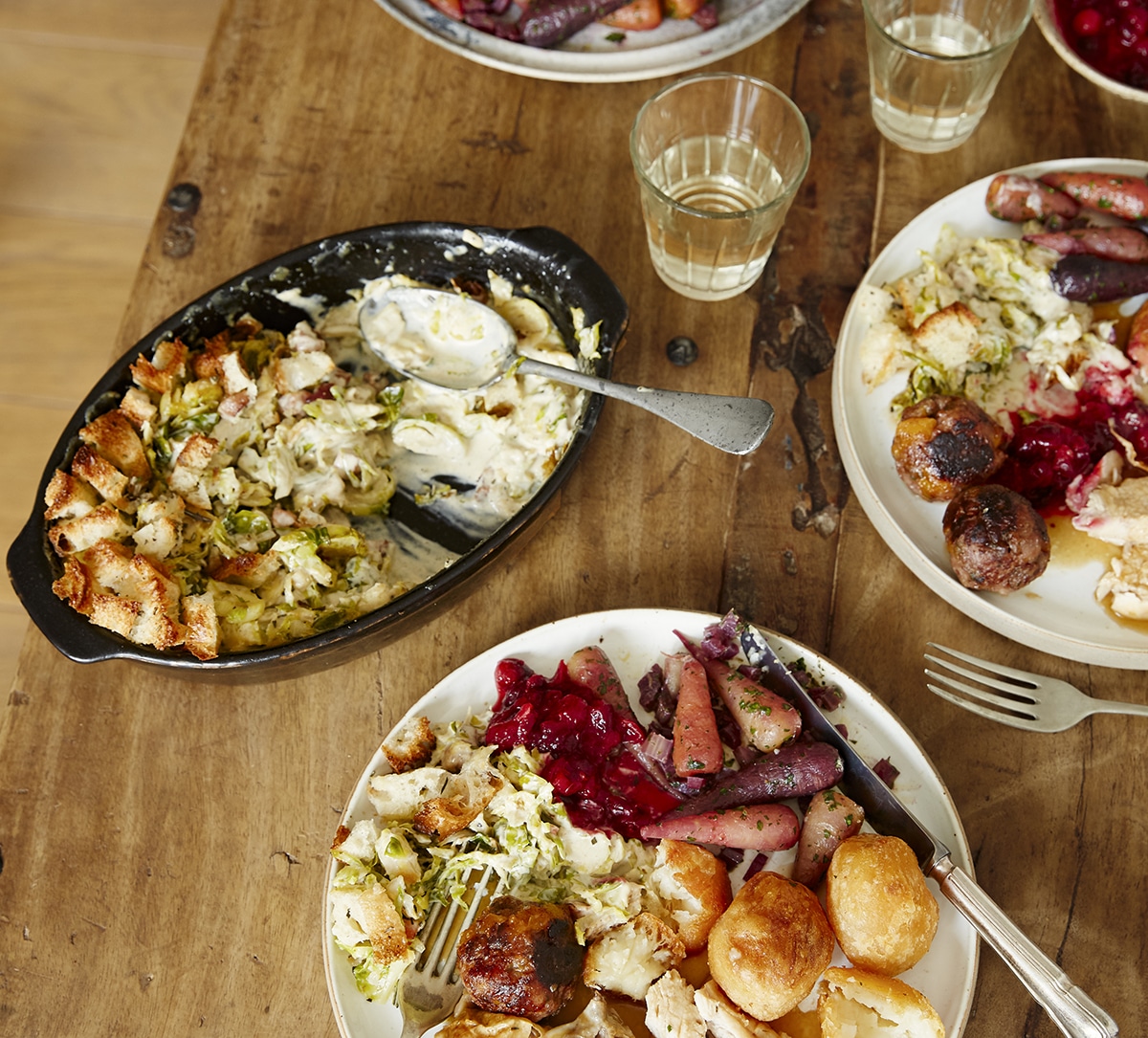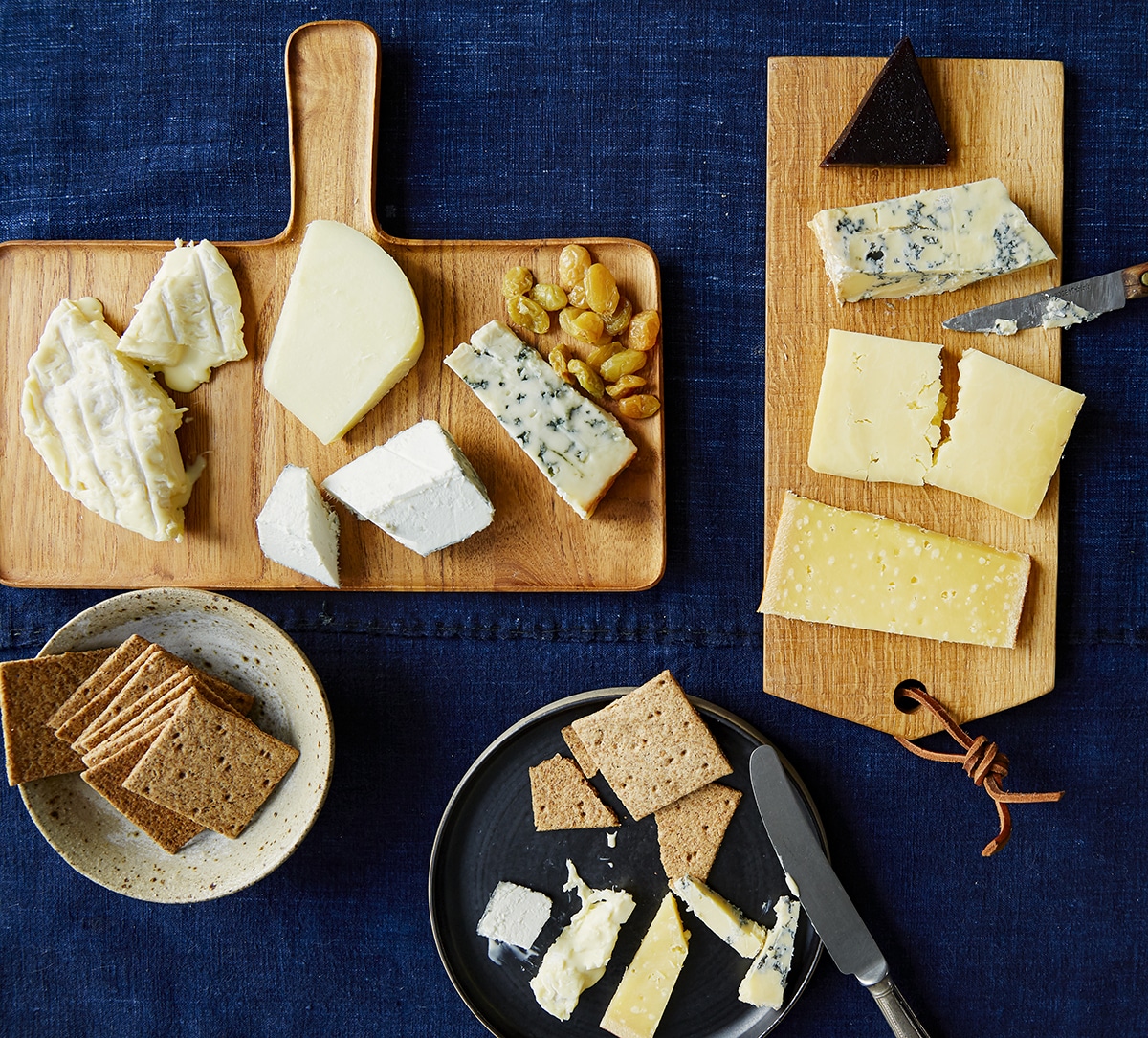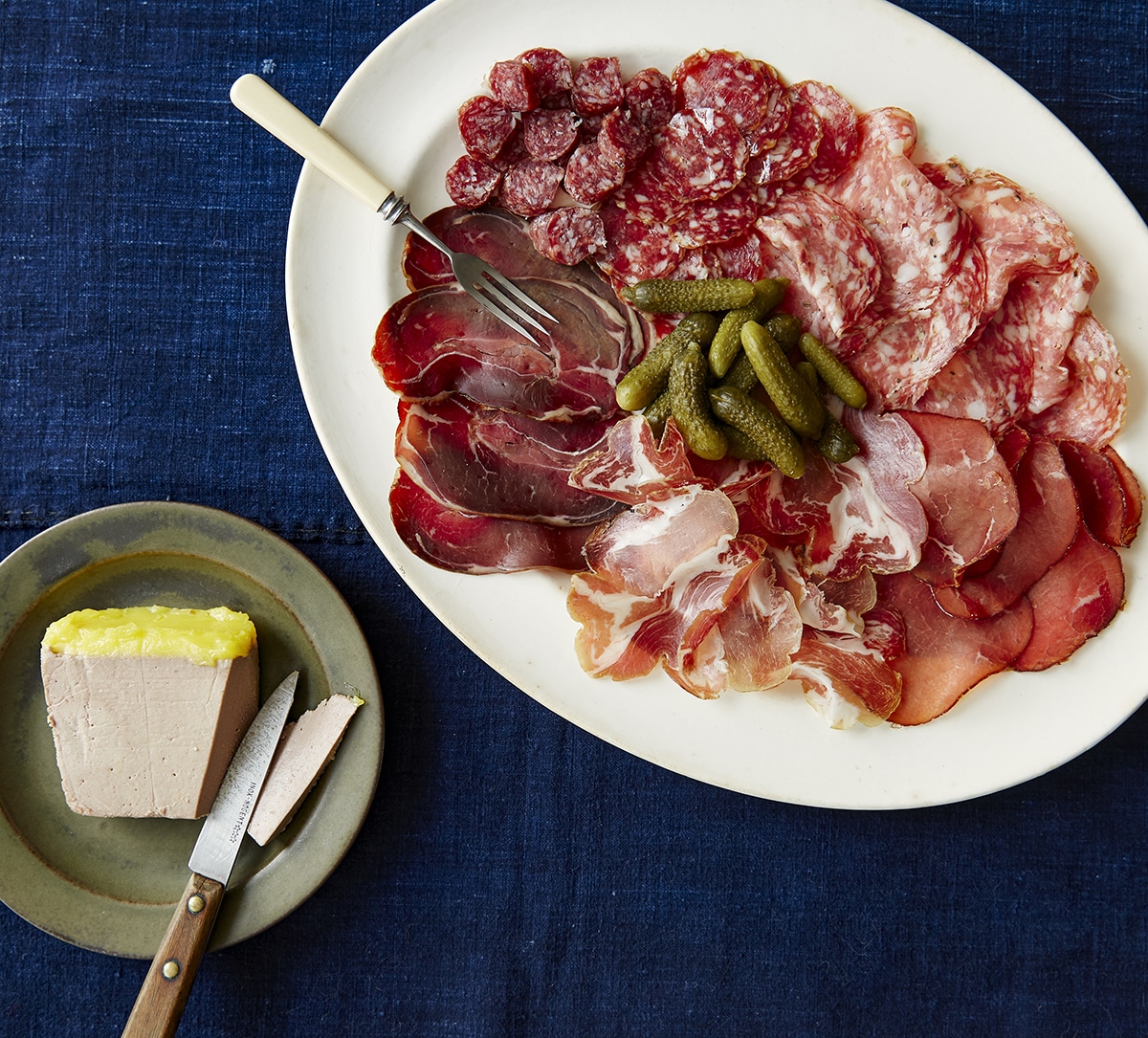Christmas fishes
Bee Wilson on how, throughout much of Europe, the Christmas season is all about fish, from the salt cod of Provence to the rancid skate of Iceland
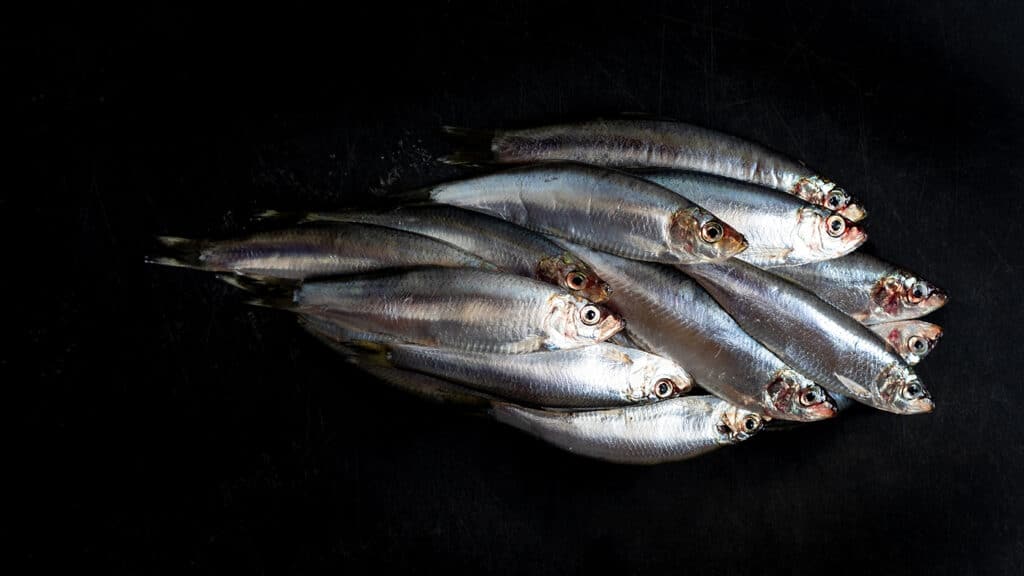

“THE IDEA OF CELEBRATING WITH SEAFOOD IS A GOOD ONE. THERE’S SOMETHING LOVELY ABOUT EATING FISH ON DARK, COLD DAYS”
Image: Regula Ysewijn
Every season has its particular scents, and perhaps none more so than Christmas. For many of us in Britain, Christmas really begins when the house smells of cinnamon and cloves from the mulled wine and mince pies, and the zest of clementines lingers in the air. In Iceland, by contrast, you know it’s Christmas when you can smell the inimitable tang of rotten skate and the thick cloud of ammonia and fishiness it leaves in its wake.
In Iceland, Christmas is preceded on 23rd December by Thorláksmessa, St Thorlak’s day, a celebration of the patron saint of Iceland. Thorlak’s memory is toasted each year with a special dish of putrefied skate, known as skata, which is fermented for a long time before being eaten with rye bread, butter and potatoes.
Skata divides people. Many Icelanders live in apartments and the overwhelming and pervasive pong created by the cooking of skata gives rise to heated arguments. Some are so horrified by the smell that they insist it should be cooked outside on the barbecue, even at the height of winter. Others seal the doors of the kitchen with duct tape while it’s cooking. But for devotees, it is a happy smell because the Christmas season would not be the same without it. Those who love it say that – as with a pungent cheese, or a bottle of Thai fish sauce – the awful smell and mouth-numbing pungency give way to the most wonderful sweet-savoury flavour, which can be almost addictive. In any case, Icelandic cooks drive out the smell of the skata with the still stronger smell of the smoked lamb eaten on Christmas Day.
Skata may be an extreme example, but it’s just one of many European Christmas and New Year rituals involving fish and seafood. In Britain, we tend to mark the season with meat: with hams and turkeys and geese, adorned with bacon and sausage-meat stuffings and extra sausages on the side. But in most of the rest of Europe, the meal that really matters is not the feasting lunch on 25th December but the fasting dinner on Christmas Eve, which according to Christian custom, always included fish. In Spain, for example, the Christmas Eve dinner may start with a joyous platter of pink prawns in their shells and proceed to hake or bream.
The idea of celebrating with seafood is a good one. There’s something lovely about eating fish on dark, cold days. I love the elegance of the French tradition of seeing in the New Year with oysters. A good oyster tastes like a fresh start: the shocking cold of the sea cleansing your throat.
In Poland and much of Scandinavia, the celebratory fish of Christmas will be some kind of preserved or salted herring. In her book Polska: New Polish Cooking, Zuza Zak notes that one of the Christmas Eve staples in her family is preserved herrings dressed with olive oil, shallots, white pepper and just a little cinnamon. Zak eats this as part of a zakuski spread with rye bread or bagels. The other essential ingredient to go with Polish Christmas Eve herrings is very cold vodka. You have a sip of vodka and then a bite of oily fish. Zak writes that her father believes that fatty foods neutralise the alcohol.
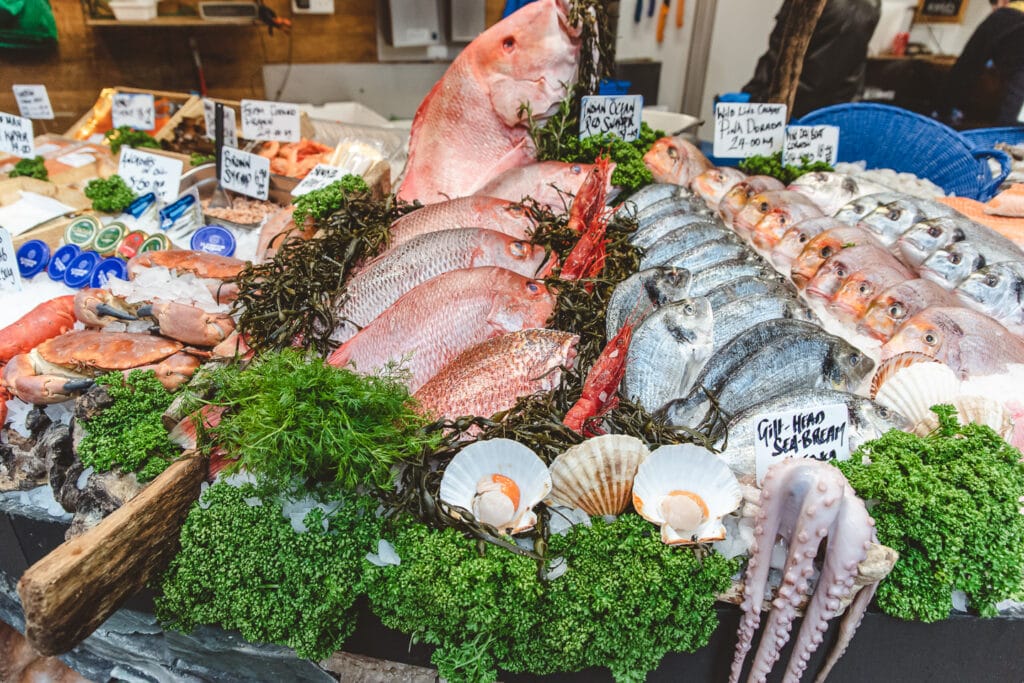
Elsewhere in the Catholic world, the fish of Christmas tends to be salt cod. In her wonderful book European Festival Food, Elisabeth Luard describes the Christmas Eve fasting suppers of Provence, where the meal is called the ‘gros souper’. This starts at around 7pm with a substantial vegetable soup or vegetable gratin made from chard or cardoons. Next come snails, and salt cod, perhaps served with a Provençal sauce of tomatoes with garlic and capers. Luard notes that in Provence at Christmas there are special stalls selling salt-cod puree (‘brandade de morue’) and ready-soaked fish. After the salt cod, the family go out for midnight mass, before returning for mulled wine and 13 desserts – various dried fruits and nuts that represent Christ and his disciples.
The rituals of this Christmas meal have remained unchanged for decades. Luard quotes a Provençal poet, Frederic Mistral, who ate the gros souper in Saint-Remy some time around 1900: “On the white cloth are placed, in appropriate order, the sacramental dishes. The snails, which each diner winkles from the shell with a brand-new pin, the fried salt-cod, the muge [gurnard] stuffed with olives, chard, cardoons, céléri à la poivrade, followed by a host of delicious sweetmeats…”
It’s worth copying the tradition of fish on Christmas Eve. For one thing, the lightness of fish is just right to prepare you for the debauch of brandy butter and roast meats that awaits you the following day. I also feel that fish – really fresh fish – has become one of the greatest of all treats because in so many parts of the country, it is hard to get.
The question is what fish? As with Icelandic skata, there are some Christmassy fish customs that seem like less than a treat. American writer Garrison Keiller recalled his horror during childhood at being served lutefisk – wind-dried stockfish soaked in soapy lye – in honour of his Norwegian ancestors. Keiller knew he would be told to have just a little. “Eating ‘a little’ was,” he notes, “like vomiting ‘a little’, as bad as ‘a lot’.”
I’m afraid I feel the same about carp, even though it brings Christmas joy to millions of people across eastern Europe. Carp in grey sauce is a Christmas Eve delicacy in Germany. As Jane Grigson explains, “The fish is cooked with its scales on and everyone treasures a scale or two in their purse to bring them good luck in the coming year.” I’m charmed by this idea, but not by the fish itself. One December, several years ago, I made a jellied carp and those who ate it are still traumatised by the muddy flavour and strange, fleshy texture.
In my family, we prefer to celebrate Christmas Eve with a huge fish pie, golden-crusted with buttery mashed potatoes and filled with cod, some kind of smoked fish and cold-water prawns in béchamel scented with bay leaf. After his second helping, my youngest child always seems to sleep well, despite the excitement of hanging up his stocking.
Another great fishy centrepiece is salmon baked in pastry with currants and ginger, a dish that was originally created by George Perry-Smith of the legendary Hole in the Wall restaurant in Bath. But this year, I have half a mind to make a big fish soup on Christmas Eve, for our own version of le gros souper. The greatest fish soup recipe I have ever come across was in Gill Meller’s book, Gather.
I have made it several times, never with exactly the combination of fish Meller recommends, but following his aromatics to the letter. What makes it so sublime is that the soup is seasoned not just with fennel and saffron but also paprika and star anise, which give the broth an almost otherworldly warmth. The scent of this soup cooking is so good, it makes me feel it’s Christmas even when it’s not.
